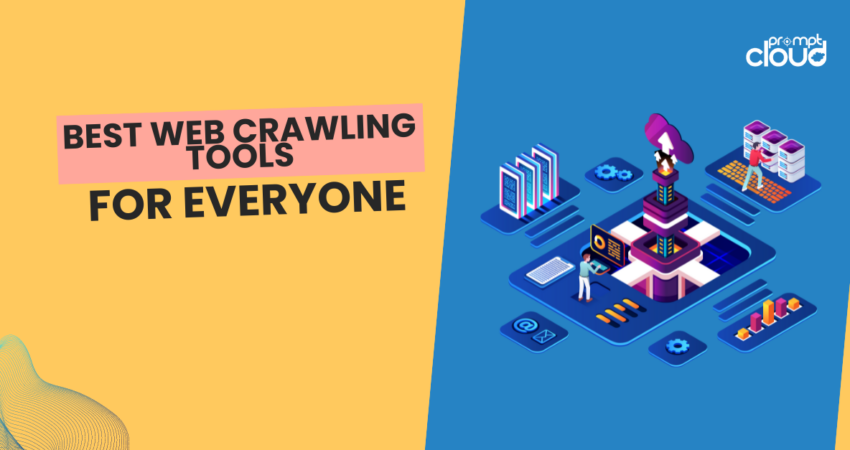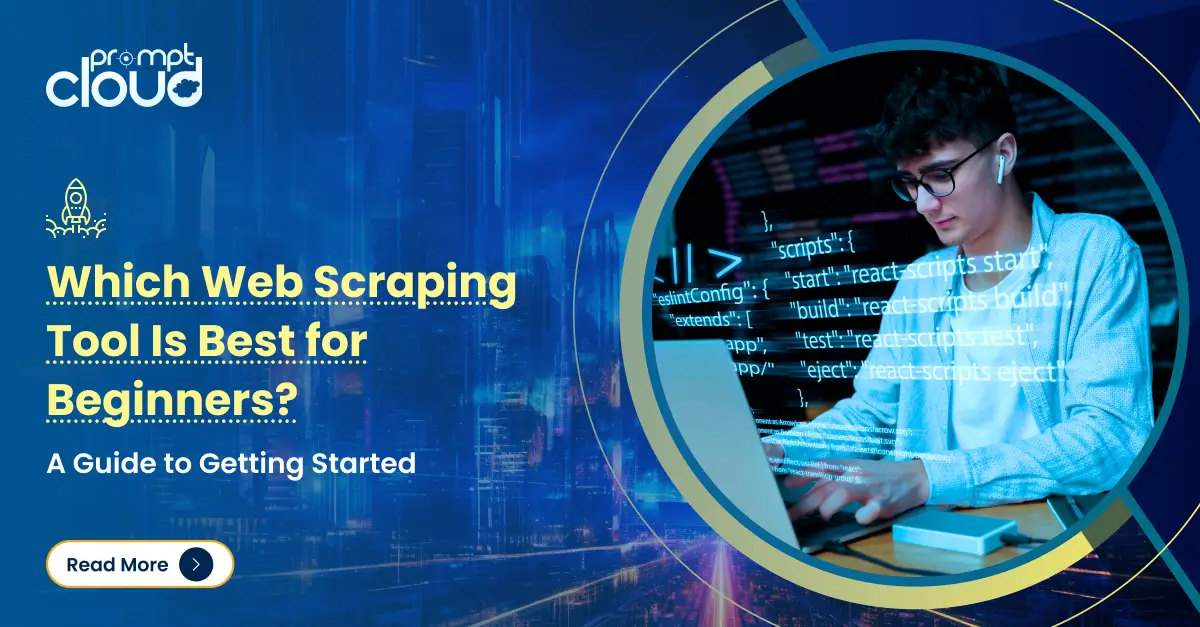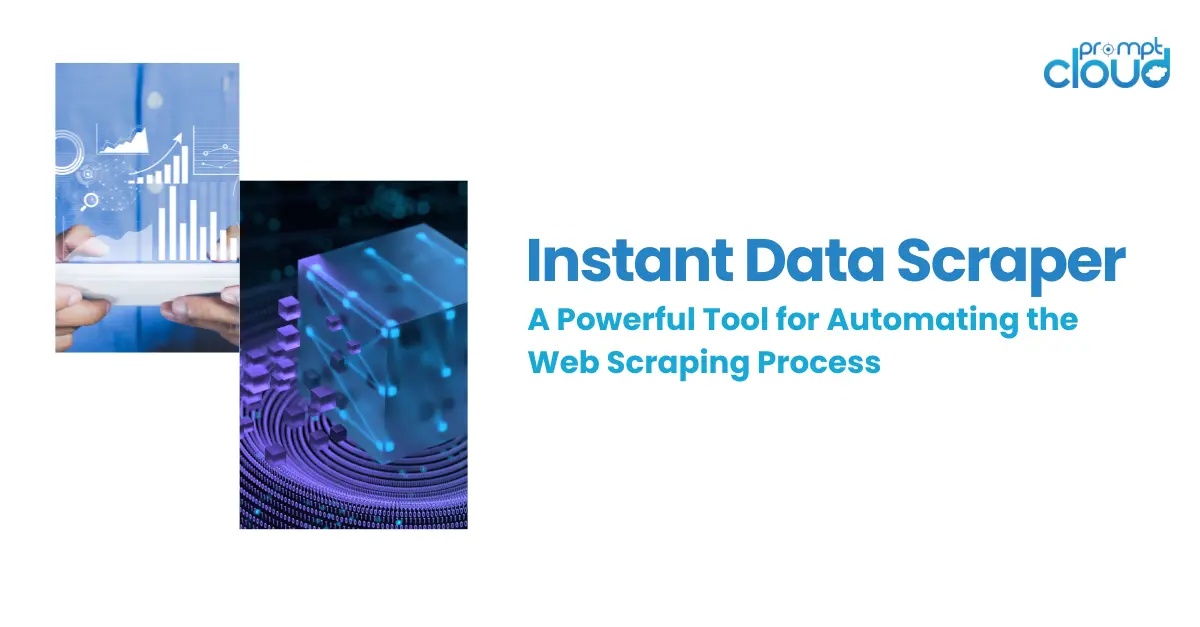
What is Web Crawling
Web crawling, a cornerstone of the digital era, is the automated process of scanning and indexing web pages. By navigating the web systematically, crawlers, also known as spiders or bots, extract data, enabling businesses to harness the vast wealth of information available online.
Why Use Web Crawler Tools
In a data-driven world, web crawler tool are indispensable for businesses seeking to gather insights, monitor competitors, and understand market trends. These tools automate the process, making it efficient, scalable, and accessible even for those without technical expertise.
What Are the Types of Web Crawler Tool
Web crawler tool come in various forms, catering to different needs and technical capabilities. Broadly, they can be categorized into:
- Cloud-Based Crawlers: Offered as services, these require minimal setup and are ideal for large-scale operations.
- Desktop Applications: Installed on a user’s computer, these are suitable for more hands-on, customized crawling.
- Open-Source Frameworks: These provide maximum flexibility but require programming knowledge.
10 Best Web Crawling Tools
| Web Crawling Tool | Type | Key Feature | Ideal for | Pricing | User-Friendly | Special Features |
| Octoparse | Cloud-Based | No-Code Interface | Non-coders | Starts from $89/month | Very | Auto IP Rotation |
| ParseHub | Cloud-Based | Machine Learning | Scheduled Crawling | Starts from $189/month | High | Advanced Data Parsing |
| Zyte | Cloud-Based | Smart Proxy Management | Advanced Users | Starts from $29/month | High | Headless Browser Support |
| ScrapeHero | Cloud-Based | Custom Solutions | Customized Scraping | Custom Pricing | High | No-Code Interface |
| BrightData | Cloud-Based | Extensive IP Network | Advanced Data Collection | Custom Pricing | Medium | Real-Time Data Collection |
| Scrapy | Open-Source Framework | Asynchronous Crawling | Developers | Free | Low | Flexibility and Extensibility |
| Import.io | Cloud-Based | No-Code Dataset Creation | Pricing Analysts | Starts from $299/month | Medium | Automated Web Workflows |
| ScraperAPI | API | Proxy Pool | Developers | Starts from $49/month | High | Anti-Bot Bypassing |
| Apify | Cloud-Based | Integration Capabilities | System Integration | Starts from $49/month | Medium | Datacenter Proxies |
| PromptCloud | Managed Service | Custom Data Extraction | End-to-End Solutions | Custom Pricing | Very | Legal Compliance |
Octoparse
Octoparse stands out as a beacon for non-coders. This no-code tool elegantly simplifies the process of scraping large volumes of data, transforming it into structured spreadsheets effortlessly. With its user-friendly approach, Octoparse is ideal for individuals and businesses looking to harness the power of data without delving into the complexities of coding.
Key Features of Octoparse:
- Point-and-Click Interface: The intuitive design of Octoparse allows users to navigate and select data points easily, making the process of setting up a crawl as simple as a few clicks.
- Automatic IP Rotation: To ensure seamless data extraction, Octoparse comes equipped with an automatic IP rotation system, helping you bypass anti-bot measures effectively.
- Dynamic Site Scraping Capability: One of Octoparse’s remarkable strengths is its ability to crawl dynamic web pages, a feature essential for extracting data from modern, interactive websites.
- Anonymity in Data Crawling: Privacy and anonymity are critical in data scraping. Octoparse offers anonymous data crawling, ensuring your operations stay under the radar.
- Accessibility: With a free version available, Octoparse is accessible for small-scale projects. For more extensive needs, standard packages begin at $89 a month, offering a range of advanced features.
ParseHub
Utilizing advanced machine learning algorithms, this tool stands out for its ability to navigate and interpret even the most complex websites, converting web content into structured data. Available for Mac, Windows, and Linux, ParseHub strikes a balance between functionality and accessibility.
Key Features of ParseHub:
- Machine Learning Technology: ParseHub leverages machine learning to accurately identify and extract data from tricky web pages.
- Versatile Data Output Formats: The tool supports various data formats, allowing users to export scraped data into commonly used structures.
- Regular Expression Support: ParseHub includes support for regular expressions, enhancing its data scraping accuracy and flexibility.
- IP Rotation and Scheduled Crawling: These features ensure efficient data collection, with scheduled crawling enabling automated, timely data extraction.
- API and Webhooks Integration: ParseHub offers API and webhooks support, facilitating seamless integration with other applications and systems.
- User-Friendly Interface: Designed for ease of use, it requires no coding skills, making it accessible for users of all technical backgrounds.
- Pricing: ParseHub provides a free basic plan for starters, with premium plans starting at $189 per month, catering to more extensive scraping needs.
Zyte
Zyte emerges as a formidable player in the field of cloud-based data extraction, offering a seamless experience with its API-driven approach. Catering to a wide range of data extraction needs, Zyte stands out with its innovative features, making it an ideal choice for businesses and individuals alike.
Key Features of Zyte:
- Smart Proxy Management: Zyte integrates advanced proxy management, ensuring efficient and uninterrupted data scraping.
- Headless Browser Support: This feature allows Zyte to render JavaScript-heavy websites, enabling comprehensive data extraction from dynamic web pages.
- Residential Proxies: With access to residential proxies, Zyte enhances its capability to bypass geo-restrictions and anti-scraping technologies.
- Responsive Customer Support: Zyte prioritizes customer experience, offering excellent support to address user queries and issues effectively.
- Geolocation Features: The tool’s geolocation capabilities allow users to access and extract data from region-specific websites.
- Flexible Pricing: Zyte offers a 14-day free trial, with affordable monthly plans starting as low as $29. Additionally, there’s a 10% discount on annual subscriptions, making it a cost-effective option for long-term projects.
ScrapeHero
ScrapeHero has carved a niche in the web scraping landscape with its highly customizable and user-oriented approach. Known for its versatility, this tool caters to a broad spectrum of data extraction needs, from small-scale projects to large enterprise requirements.
Key Features of ScrapeHero:
- Custom Web Scraping Solutions: ScrapeHero stands out for offering tailored scraping services, adaptable to specific business requirements.
- No-Code Interface: Designed to be accessible, it allows users to scrape data without needing any programming knowledge.
- Cloud-Based Service: As a cloud-based tool, ScrapeHero offers scalability and ease of use, free from the constraints of local hardware.
- Diverse Data Formats: The tool supports a variety of data formats, ensuring compatibility with different analysis tools and platforms.
- Robust Data Collection: ScrapeHero is capable of handling complex data extraction tasks, including dynamic and JavaScript-heavy websites.
BrightData
BrightData, once known as Luminati, has established itself as a forefront player in the web scraping and data collection industry. Renowned for its extensive proxy network, this platform offers unparalleled access to accurate, real-time data from across the web.
Key Features of BrightData:
- Extensive IP Network: BrightData boasts one of the largest networks of residential, mobile, and datacenter IPs, facilitating efficient and anonymous data collection.
- Advanced Proxy Manager: The platform includes a sophisticated proxy management tool, enabling users to optimize their scraping activities.
- Real-Time Data Collection: Its ability to provide real-time data makes it an invaluable tool for market analysis, competitor monitoring, and more.
- Highly Scalable: BrightData’s infrastructure is designed to handle large-scale data collection, making it suitable for businesses of all sizes.
- Robust Compliance Framework: The platform operates with a strong emphasis on legal compliance, ensuring data is collected ethically and legally.
Scrapy
Scrapy, renowned in the realm of web scraping, stands as a powerful open-source tool built on Python. Designed for programmers, this framework offers extensive customization options for creating and modifying web crawler tool for large-scale data extraction. Its compatibility with Linux, Windows, and Mac, coupled with its free accessibility, makes Scrapy a preferred choice for developers around the globe.
Key Features of Scrapy:
- Open-Source Python Library: Scrapy is built on Python, making it highly adaptable and suitable for a wide range of web scraping tasks.
- Customizable Framework: Programmers can modify and tailor the framework to fit specific data extraction requirements.
- Large-Scale Scraping Capabilities: Designed for efficiency, Scrapy excels in handling large-scale web scraping projects.
- Cross-Platform Compatibility: It runs smoothly on Linux, Windows, and Mac, ensuring flexibility and ease of use across different operating systems.
Import.io
Import.io stands out as a highly capable website crawling software, specially designed for pricing analysts and professionals seeking to create their own datasets without delving into coding. This tool excels in scanning vast numbers of web pages and generating APIs tailored to specific requirements. With features like daily or monthly competitive reports, Import.io becomes an essential tool for tracking competitors’ products, pricing changes, and stock levels.
Key Features of Import.io:
- No-Code Dataset Creation: Import.io allows users to create datasets easily without any coding requirements.
- Large-Scale Web Page Scanning: Capable of scanning thousands of web pages, it is perfect for extensive data collection.
- Custom API Generation: The tool can generate over a thousand APIs based on user-specific needs.
- Competitive Analysis Reports: Import.io provides insightful daily or monthly reports on competitor activities, pricing changes, and stock levels.
- 14-Day Free Trial: It offers a two-week trial period, allowing users to explore its features before committing. Monthly plans start at $299.
ScraperAPI
ScraperAPI emerges as a specialized tool in the web scraping realm, designed to meet the needs of developers crafting their own scrapers. This tool simplifies the process of obtaining raw HTML from any website with a single API call, integrating support for proxies, browsers, and CAPTCHA resolution. With its straightforward approach and a seven-day trial, ScraperAPI presents a practical solution for developers, with plans starting at $49 per month.
Key Features of ScraperAPI:
- Single API Call for Raw HTML Extraction: ScraperAPI allows developers to retrieve raw HTML from any website efficiently.
- Integrated Proxy Pool: The service includes a proxy pool, which aids in bypassing IP bans and geo-restrictions.
- Anti-Bot Bypassing Capability: It is adept at circumventing anti-bot measures, ensuring successful data extraction.
- Customization Options: Developers can tailor the tool to their specific scraping needs.
- High Reliability: ScraperAPI offers a 99.9% uptime guarantee, emphasizing its stability and reliability.
Apify
Apify sets itself apart as a web scraping and automation platform that seamlessly blends flexibility with functionality. Catering to various industries like e-commerce, marketing, and real estate, Apify offers ready-to-use web crawler tool that simplify web crawling tasks. Its ability to export scraped data in formats like JSON or CSV and integrate with existing systems such as Zapier, Make, or other web apps through API and webhooks makes it a highly adaptable solution. With a lifetime free plan and paid plans starting at $49 per month, Apify is accessible to a wide range of users.
Key Features of Apify:
- Flexible Web Crawler Tool: Apify provides tools that are adaptable to various industry needs, ensuring versatility in data extraction.
- Integration Capabilities: The platform excels in integrating with numerous systems, enhancing its utility in automated workflows.
- Data Export Options: Users can export data in machine-readable formats, facilitating ease of analysis and integration with other systems.
- Datacenter Proxies: Apify includes datacenter proxies that aid in bypassing anti-bot measures during web scraping.
PromptCloud
PromptCloud is a distinguished player in the web scraping service arena, offering end-to-end managed solutions tailored to the specific needs of businesses. It stands out for its ability to handle complex, large-scale data extraction tasks, delivering high-quality, structured data that enables informed decision-making.
Key Features of PromptCloud:
- Custom Data Extraction Solutions: PromptCloud specializes in providing tailored web scraping services, ensuring data is relevant and aligned with client needs.
- Scalable and Reliable: Designed to handle large-scale data requirements, PromptCloud offers a scalable solution that maintains high reliability and accuracy.
- Managed Service: As a fully managed service, PromptCloud takes care of all aspects of the web scraping process, from setup to delivery, ensuring a hassle-free experience for clients.
- Data Quality Assurance: The service emphasizes delivering high-quality, accurate data, crucial for business analytics and intelligence.
- Legal Compliance: PromptCloud operates with a focus on legal compliance, ensuring data is collected ethically and in accordance with relevant regulations.
In Summary
In conclusion, while there are many web crawler tool available, PromptCloud distinguishes itself by offering a comprehensive, hassle-free solution tailored to your specific needs. Whether you’re looking to gather market intelligence, monitor competitors, or harness the potential of big data, PromptCloud ensures you get the most out of web crawling technologies. Get in touch with us at sales@promptcloud.com
Frequently Asked Questions
Is it illegal to web crawler?
The legality of using a web crawler largely depends on several factors, including how the crawler is used, the target website’s terms of service, and the data being accessed. Here are some key considerations:
- Terms of Service Compliance
- Respecting Robots.txt
- Data Use
- Avoiding Disruption
- Jurisdiction
How do I crawl an entire website?
To crawl an entire website, you typically use a web crawler or a scraping tool, which systematically browses the website and collects data from its pages. The process usually begins by identifying the website’s starting URL (the homepage or a specific page), and then the crawler follows all the links found on that page to other pages within the same domain. It continues this process recursively until it has visited all accessible pages on the site.
There are several tools and libraries available for web crawling, such as Scrapy in Python or Beautiful Soup, which can be customized for specific crawling tasks. Remember, it’s important to always consider the legal and ethical implications of crawling a website, especially in terms of the site’s terms of service and data privacy laws.
What is the difference between a web crawler and a web scraper?
A web crawler, often known as a spider, is designed to navigate and index content from the World Wide Web. Its primary purpose is to visit web pages systematically by following links, making it useful for tasks like updating web content for search engines. In contrast, a web scraper is specifically used to extract data from websites. Unlike a crawler, which might simply catalog information about webpages, a scraper targets specific information on these pages (like product prices, text, or images) and extracts it for further use, such as data analysis or aggregation. While a crawler is more about navigation and indexing, a scraper is focused on data extraction and is often used in conjunction with a crawler to gather specific types of data from the web pages that the crawler discovers.
Are Web Crawlers Legal?
The legality of web crawling, a process used by search engines and various services to index the content of websites across the internet, often prompts questions and concerns. At its core, web crawling is legal. However, the manner in which a web crawler is used can raise legal issues, particularly concerning copyright infringement, violation of terms of service, and data privacy laws.
Key Points to Understand About Web Crawler Legality:
- Respect for Robots.txt: Websites use a file named “robots.txt” to communicate with web crawlers, indicating which parts of the site should or should not be crawled and indexed. Ethical and legal crawling involves adhering to these directives.
- Copyright Considerations: While crawling for indexing purposes is generally permissible, reproducing copyrighted material without permission can lead to legal issues. It’s essential to consider copyright laws when storing or displaying crawled data.
- Terms of Service Compliance: Many websites outline conditions in their terms of service that may restrict or prohibit crawling. Ignoring these conditions can potentially lead to legal actions, including being banned from the site or facing lawsuits.
- Data Privacy Regulations: With the advent of stringent data privacy laws like the GDPR in Europe and CCPA in California, web crawlers must be careful not to unlawfully collect or misuse personal data without consent.
What is the best web crawler?
Identifying the “best” web crawler largely depends on your specific needs, the scale of your project, the complexity of the websites you aim to crawl, and the type of data you’re looking to collect. However, there are several highly regarded web crawlers in the industry known for their efficiency, ease of use, and robust feature sets. Here’s an overview of some top contenders:
Scrapy
- Pros: Open-source and highly flexible, Scrapy is popular among developers for scraping complex websites. It’s written in Python, making it relatively easy to learn for those familiar with the language. Scrapy is efficient in handling large volumes of data and offers built-in support for exporting data in various formats.
- Cons: While powerful, it might be overwhelming for beginners due to its steep learning curve, especially for those not proficient in Python.
Beautiful Soup
- Pros: Another Python library, Beautiful Soup, is well-suited for smaller projects or those just beginning with web scraping. It’s straightforward to use for extracting data from HTML and XML files and works well for simple web scraping needs.
- Cons: Beautiful Soup itself is not a web crawler; it needs to be used in conjunction with a request library to fetch web pages. It might not be as efficient as Scrapy for large-scale or complex scraping tasks.
Octoparse
- Pros: Octoparse is a user-friendly, point-and-click desktop application that’s great for non-programmers. It can handle both static and dynamic websites and offers cloud services for scraping at scale.
- Cons: The free version has limitations, and advanced features require a paid subscription. It might not offer the same level of flexibility as coding-based solutions for complex scraping requirements.
ParseHub
- Pros: ParseHub is a visual data extraction tool that supports complicated websites with JavaScript, AJAX, cookies, etc. It provides a simple interface for selecting the data you wish to scrape, making it accessible for users without coding skills.
- Cons: Similar to Octoparse, advanced features are behind a paywall, and performance can vary based on the complexity of the task and the website structure.
Diffbot
- Pros: Diffbot uses advanced machine learning technology to automatically turn web pages into structured data. It’s powerful for large-scale web data extraction projects and offers an extensive range of APIs for different types of data.
- Cons: Its advanced technology and features come at a higher cost, making it less accessible for individuals or small projects with tight budgets.
Choosing the Best Web Crawler
The “best” crawler will depend on your project’s requirements, budget, and technical expertise. For developers comfortable with coding, Scrapy or Beautiful Soup might be ideal. For those looking for a no-code or low-code solution, Octoparse or ParseHub could be more appropriate. If your project demands cutting-edge AI to interpret and structure web data at scale, Diffbot could be the way to go.
It’s recommended to evaluate each option against your specific needs, considering factors such as scalability, ease of use, support for dynamic content, and cost, to find the web crawler that best fits your project.
What is a crawler on a website?
A crawler, also known as a spider or a bot, is a type of software designed to systematically browse the World Wide Web to collect information from websites. The primary function of a crawler is to index the content of websites, allowing search engines to retrieve and organize this information in search engine results pages (SERPs) efficiently.
Here’s how it works in a nutshell:
- Starting with a list of URLs to visit, known as seeds, the crawler begins its task by fetching the content of these web pages.
- As it accesses these pages, it identifies all the hyperlinks on the page and adds them to the list of URLs to visit next, a process known as web crawling.
- The crawler then visits these new URLs, indexes their content, and continues the process, allowing it to move from link to link and gather a wide range of information from across the internet.
- The collected data, which includes page titles, content, images, and keywords, is then used by search engines to rank websites based on their relevance to search queries.
Is Google search a web crawler?
Google Search relies on a web crawler known as Googlebot. Googlebot is the generic name for Google’s web crawler that scans, or “crawls,” the internet to find and index new and updated pages to be added to the Google index. This process enables Google Search to offer up-to-date and relevant search results to user queries.
Here’s a brief overview of how Googlebot works:
- Discovery: Googlebot starts with a list of webpage URLs generated from previous crawl processes and augments this list with Sitemap data provided by webmasters. As it visits these URLs, it identifies links on pages and adds them to the list of sites to crawl. New sites, changes to existing sites, and dead links are noted and used to update the Google index.
- Crawling: Googlebot processes each of the pages it crawls to compile a massive index of all the words it sees and their location on each page. It also processes information included in key content tags and attributes, such as Title tags and ALT attributes.
- Indexing: After a page is crawled, Googlebot processes and indexes the complete text: its content, as well as the metadata and all the content linked via hrefs. Pages are categorized according to their content and other factors.
- Serving Results: When a user enters a query into Google Search, Google searches its index for matching pages and returns the most relevant results. The order of search results is determined by over 200 factors including user location, language, and device type, as well as page relevance and website authority.
Googlebot’s crawling activity is sophisticated and respects rules set by webmasters in the robots.txt file of each website, which can restrict or completely block Googlebot from crawling certain pages. Moreover, Google provides tools through Google Search Console where webmasters can monitor and test how Googlebot accesses their sites, submit sitemaps, and check indexing status among other functionalities.
Which web crawler is best?
Choosing the “best” web crawler depends on your specific needs, technical skills, and the scale of your web scraping or data collection project. Here’s a summary of some top web crawlers and their typical use cases to help you decide which might be the best fit for you:
Scrapy
- Best for: Advanced users and developers needing a powerful, flexible framework for large-scale data extraction.
- Strengths: Open source, highly customizable, and efficient for complex web scraping tasks. Written in Python, making it popular among data scientists and developers.
Beautiful Soup
- Best for: Beginners and those working on smaller, less complex scraping tasks.
- Strengths: Also written in Python, it’s easier to learn than Scrapy but best used for simple tasks. Requires pairing with a web request library like Requests to fetch web pages.
Octoparse
- Best for: Non-programmers or businesses needing to scrape data without developing custom code.
- Strengths: User-friendly interface with a point-and-click tool to select data without coding. Offers both local and cloud-based data extraction.
ParseHub
- Best for: Users looking for a visual interface to handle both simple and complex sites, including those with JavaScript.
- Strengths: Offers a point-and-click interface to select elements, making it accessible to non-developers. Supports data extraction from sites using AJAX and JavaScript.
Diffbot
- Best for: Enterprises needing to turn web pages into structured APIs.
- Strengths: Uses advanced AI and machine learning to automatically parse web pages and extract data, turning websites into structured APIs. Ideal for large-scale, automated web data extraction.
Common Crawl
- Best for: Researchers and anyone interested in analyzing vast amounts of web data without doing their own crawling.
- Strengths: Provides a publicly available archive of the web that is freely accessible, containing petabytes of data including web page content, metadata, and links.
Decision Factors:
- Skill level: Choose based on your coding skills or preference for visual interfaces.
- Complexity of tasks: Advanced frameworks like Scrapy are better for complex scraping needs, while tools like Octoparse and ParseHub are suitable for simpler projects.
- Scale: For large-scale data extraction, consider powerful, customizable options like Scrapy or enterprise solutions like Diffbot.
- Cost: Budget constraints might influence your choice; some tools offer free versions with limitations, while others are premium.
What is a web crawler used for?
A web crawler, also known as a spider or bot, serves several critical functions in the digital ecosystem. Here are some of the primary uses:
1. Search Engine Indexing
The most well-known use of web crawlers is by search engines like Google, Bing, and Yahoo. Crawlers visit web pages, read their content, and follow links to other pages on the site, effectively gathering information about those pages. This information is then indexed, allowing search engines to quickly retrieve and display relevant web pages in response to user queries.
2. Web Archiving
Web crawlers are used by organizations and services, such as the Internet Archive, to collect and preserve digital artifacts. By continually crawling the web, these services capture snapshots of websites at different points in time, preserving them for historical records and future access.
3. Data Collection for Research
Researchers use web crawlers to aggregate information from the internet for various studies. This can include analyzing trends, understanding social behaviors online, or gathering data on specific subjects or industries.
4. Market and Competitive Analysis
Businesses utilize web crawlers to gather data on competitors, market trends, pricing information, and customer sentiments. This data helps companies make informed decisions, tailor their marketing strategies, and stay competitive in their industry.
5. Content Aggregation
Web crawlers are used by content aggregation platforms (e.g., news aggregators, social media sites) to collect content from various sources across the web. This enables them to provide users with a centralized feed of content tailored to their interests.
6. SEO Monitoring
SEO professionals use specialized web crawlers to audit websites, checking for issues like broken links, improper SEO optimizations, or poor mobile usability. These audits help improve website visibility and search engine ranking.
7. Website Change Detection
Some web crawlers are designed to monitor changes on specific websites, alerting users about updates. This is particularly useful for tracking updates on legal documents, product pages, or any site where information changes frequently.
8. E-commerce and Price Monitoring
Crawlers are extensively used in the e-commerce sector to monitor product listings, availability, and pricing across different online stores. This data supports price comparison services, market analysis, and strategic pricing decisions.
In summary, web crawlers are versatile tools employed across various fields for indexing, archiving, research, competitive analysis, and monitoring. Their ability to automate data collection and processing makes them indispensable in the era of big data and the internet.
What are web crawling tools?
Web crawling tools, also known as web scrapers or web spiders, are software applications designed to automate the process of collecting data from the internet. These tools navigate the web, accessing and downloading content from websites, and then extracting specific information from the downloaded content. The use of web crawling tools spans various applications, from search engine indexing to market research, SEO analysis, competitive intelligence, and more. Here are some popular web crawling tools, each with its unique features and use cases:
1. Scrapy
- Description: An open-source and collaborative framework written in Python. Scrapy is designed for crawling web sites and extracting structured data.
- Best For: Developers and data scientists looking for a powerful and flexible tool to build custom web crawlers for complex scraping tasks.
2. Beautiful Soup
- Description: A Python library for parsing HTML and XML documents. It creates parse trees that can be used to extract data easily.
- Best For: Beginners in Python and web scraping, and projects that require parsing and scraping data from HTML pages.
3. Octoparse
- Description: A user-friendly, point-and-click desktop software that allows users to extract data from websites without writing any code.
- Best For: Non-programmers, business analysts, and marketers who need to scrape data from websites quickly without a steep learning curve.
4. ParseHub
- Description: A visual data extraction tool that employs machine learning technology to transform web data into organized spreadsheets or APIs.
- Best For: Users needing to scrape data from websites utilizing JavaScript, AJAX, cookies, etc., without any programming skills.
5. Diffbot
- Description: Uses machine learning and computer vision to automatically turn web pages into structured data.
- Best For: Large-scale data extraction projects and enterprises needing detailed, structured information from web pages.
6. Selenium
- Description: Primarily a tool for testing web applications, Selenium can also be used to automate web browsers for scraping dynamic web content.
- Best For: Scraping data from websites that heavily rely on JavaScript and AJAX for content rendering.
7. Common Crawl
- Description: Not a tool but a publicly available repository of web crawl data. Common Crawl offers vast archives of web pages and metadata, collected over time.
- Best For: Researchers and developers who need access to large datasets without performing their own web crawls.
What are the techniques of web crawler?
Web crawlers, essential tools for navigating the vast expanse of the internet to collect data, employ a variety of techniques to efficiently index websites. These techniques not only help in managing the scale of the web but also ensure that the crawling process respects the website’s rules and efficiently uses resources. Here are some of the core techniques used by web crawlers:
1. URL Frontier Management
- Description: This involves managing the list of URLs to visit and prioritizing them based on certain criteria, such as website importance, update frequency, or crawl policies. Efficient URL frontier management ensures a crawler is always working on the most relevant and allowed URLs.
2. Politeness Policies
- Description: To prevent overloading a website’s server, crawlers follow politeness policies. This could involve limiting the number of requests to a site within a given timeframe or obeying the “Crawl-delay” directive in the robots.txt file of websites.
3. Robots Exclusion Protocol (REP) Compliance
- Description: REP, including the robots.txt file and meta tags, provides instructions to crawlers on what can or cannot be crawled on a website. Respecting these rules is crucial for legal and ethical web crawling.
4. Distributed Crawling
- Description: This technique involves using multiple machines to crawl the web simultaneously. Distributed crawling helps in scaling the crawling process to manage the enormous size of the web efficiently.
5. Dynamic Page Handling
- Description: Many modern websites use JavaScript to load content dynamically. Crawlers use techniques such as executing JavaScript code to ensure that they can access and index content that is loaded dynamically.
6. Content Deduplication
- Description: To avoid wasting resources on repeatedly processing the same content, crawlers implement deduplication techniques. This can involve checking if the content of a URL has changed since the last crawl before deciding to re-index it.
7. Incremental Crawling
- Description: Web crawlers often revisit websites to check for updated or new content. Incremental crawling is about efficiently determining which pages have changed and need to be recrawled, versus those that remain the same.
8. Sitemap Exploration
- Description: Many websites provide sitemaps, which are files listing all significant pages of a site. Crawlers can use sitemaps to discover URLs that might not be found through traditional link-following.
9. Deep Web Crawling
- Description: Techniques for accessing content that is not easily accessible through standard hyperlinks, such as databases or web forms. This often involves simulating form submissions or using APIs to access the data.
10. Link Analysis Algorithms
- Description: Algorithms like PageRank are used to determine the importance of a webpage based on the quantity and quality of links pointing to it. This helps in prioritizing pages for crawling and indexing.
These techniques showcase the complexity and sophistication behind web crawling, aiming to make the internet’s vast resources accessible and searchable while maintaining respect for website policies and resource limitations. As the web evolves, so too do the strategies of web crawlers, constantly adapting to new web technologies and architectures to efficiently index the web.



















